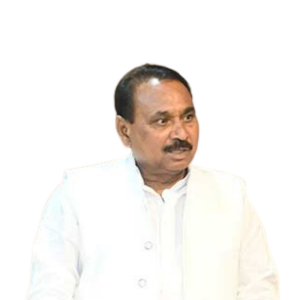Special Occasions
Here are some possible reasons to follow India by the developing world:
The level of extreme poverty in India has decreased by a surprising amount because to India's efforts. It is anticipated that the percentage of the country's population that lives in extreme poverty has decreased by fifty percent between the years 2011 and 2019.
India has established itself as a significant player in the world economy, now holding the third-largest GDP when measured in terms of purchasing power parity (PPP). Additionally, the nation has grown the amount of commodities and services that it exports while simultaneously becoming more linked into global value networks.
The country of India has undergone a monumental agricultural transformation as a result of which it has gone from being chronically dependent on grain imports to becoming an agricultural powerhouse that is now a net exporter of food. Additionally, the nation has increased its overall food security and broadened the scope of its agricultural production1.
India has made investments in the development of human capital, particularly in the areas of education and health. The nation has put into effect the National Education Policy 2020, which has as its primary objective the provision of an education that is both of high quality and open to all. Additionally, the nation has increased the number of people who are covered by its health care system and enhanced the quality of its health care, particularly during the COVID-19 epidemic.
In order to meet the problems posed by environmental sustainability, India has implemented policies and technology that are responsive to climate change. The nation has made a commitment to lower the intensity of its greenhouse gas emissions by 33-35 percent by the year 2030, compared to the levels in 2005, and to increase the share of non-fossil fuels used in the generation of electricity to 40 percent by the same year. Additionally, the nation has made investments in green cooling technology, energy efficiency, and renewable forms of energy.
India has made strides towards achieving social inclusion and empowering women and members of underrepresented groups. The nation has implemented laws and policies to protect the rights and interests of those with disabilities, as well as those of women, children, and members of minority groups. Additionally, the nation has made efforts to encourage more women to participate in the workforce, educational institutions, and positions of leadership.
In the midst of adversity and uncertainty, India has shown that it is capable of bouncing back and innovating. The nation has successfully responded to the COVID-19 pandemic by taking timely and extensive steps to restrict the virus, provide support for those who are vulnerable, and kickstart the economy. Additionally, the nation has made use of its digital capabilities and scientific expertise in order to create vaccinations, diagnostics, and therapies for the COVID-19 virus.
India has made efforts to promote regional and global collaboration on a variety of topics of mutual interest, as well as leading roles in these arenas. The nation has been an engaged participant in a variety of multilateral fora, including the United Nations, the G20, the BRICS, and the SAARC. Additionally, the nation has participated in multilateral and bilateral partnerships with other nations in the areas of commerce, investment, and security in addition to development cooperation.
- India is home to a thriving democracy as well as a civil society that promotes the ideals of pluralism, diversity, and tolerance. These institutions were cultivated over time. The political system in the country has been able to remain stable, ensuring free and fair elections, the rule of law, and accountability for those in power. Additionally, the nation has fostered an active media as well as a civil society, both of which make public engagement, debate, and dissent possible.
India has worked to build a culture that is both rich and diverse, which is a reflection of both its ancient past and its modern aspirations. The nation has been successful in maintaining and advancing its cultural traditions, including but not limited to its languages, religions, arts, literature, music, dance, cinema, gastronomy, and sports. Yoga, Ayurveda, Bollywood, and cricket are just a few examples of India's contributions to the cultural dialogue and exchange that occurs around the world as a result of the country's use of "soft power."
These are some of the most compelling arguments for developing countries to model themselves after India.
Source: Conversation with Bing, 16/05/2023
(1) India Overview: Development news, research, data | World Bank. https://www.worldbank.org/en/country/india/overview.
(2) India : Development news, research, data | World Bank. https://www.worldbank.org/en/country/india.
(3) Why India Is A Developing Country - SeeKen. https://seeken.org/india-is-a-developing-country/.
(4) Top 25 Developed and Developing Countries - Investopedia. https://www.investopedia.com/updates/top-developing-countries/.
India has established itself as a significant player in the world economy, now holding the third-largest GDP when measured in terms of purchasing power parity (PPP). Additionally, the nation has grown the amount of commodities and services that it exports while simultaneously becoming more linked into global value networks.
The country of India has undergone a monumental agricultural transformation as a result of which it has gone from being chronically dependent on grain imports to becoming an agricultural powerhouse that is now a net exporter of food. Additionally, the nation has increased its overall food security and broadened the scope of its agricultural production1.
India has made investments in the development of human capital, particularly in the areas of education and health. The nation has put into effect the National Education Policy 2020, which has as its primary objective the provision of an education that is both of high quality and open to all. Additionally, the nation has increased the number of people who are covered by its health care system and enhanced the quality of its health care, particularly during the COVID-19 epidemic.
In order to meet the problems posed by environmental sustainability, India has implemented policies and technology that are responsive to climate change. The nation has made a commitment to lower the intensity of its greenhouse gas emissions by 33-35 percent by the year 2030, compared to the levels in 2005, and to increase the share of non-fossil fuels used in the generation of electricity to 40 percent by the same year. Additionally, the nation has made investments in green cooling technology, energy efficiency, and renewable forms of energy.
India has made strides towards achieving social inclusion and empowering women and members of underrepresented groups. The nation has implemented laws and policies to protect the rights and interests of those with disabilities, as well as those of women, children, and members of minority groups. Additionally, the nation has made efforts to encourage more women to participate in the workforce, educational institutions, and positions of leadership.
In the midst of adversity and uncertainty, India has shown that it is capable of bouncing back and innovating. The nation has successfully responded to the COVID-19 pandemic by taking timely and extensive steps to restrict the virus, provide support for those who are vulnerable, and kickstart the economy. Additionally, the nation has made use of its digital capabilities and scientific expertise in order to create vaccinations, diagnostics, and therapies for the COVID-19 virus.
India has made efforts to promote regional and global collaboration on a variety of topics of mutual interest, as well as leading roles in these arenas. The nation has been an engaged participant in a variety of multilateral fora, including the United Nations, the G20, the BRICS, and the SAARC. Additionally, the nation has participated in multilateral and bilateral partnerships with other nations in the areas of commerce, investment, and security in addition to development cooperation.
- India is home to a thriving democracy as well as a civil society that promotes the ideals of pluralism, diversity, and tolerance. These institutions were cultivated over time. The political system in the country has been able to remain stable, ensuring free and fair elections, the rule of law, and accountability for those in power. Additionally, the nation has fostered an active media as well as a civil society, both of which make public engagement, debate, and dissent possible.
India has worked to build a culture that is both rich and diverse, which is a reflection of both its ancient past and its modern aspirations. The nation has been successful in maintaining and advancing its cultural traditions, including but not limited to its languages, religions, arts, literature, music, dance, cinema, gastronomy, and sports. Yoga, Ayurveda, Bollywood, and cricket are just a few examples of India's contributions to the cultural dialogue and exchange that occurs around the world as a result of the country's use of "soft power."
These are some of the most compelling arguments for developing countries to model themselves after India.
Source: Conversation with Bing, 16/05/2023
(1) India Overview: Development news, research, data | World Bank. https://www.worldbank.org/en/country/india/overview.
(2) India : Development news, research, data | World Bank. https://www.worldbank.org/en/country/india.
(3) Why India Is A Developing Country - SeeKen. https://seeken.org/india-is-a-developing-country/.
(4) Top 25 Developed and Developing Countries - Investopedia. https://www.investopedia.com/updates/top-developing-countries/.




